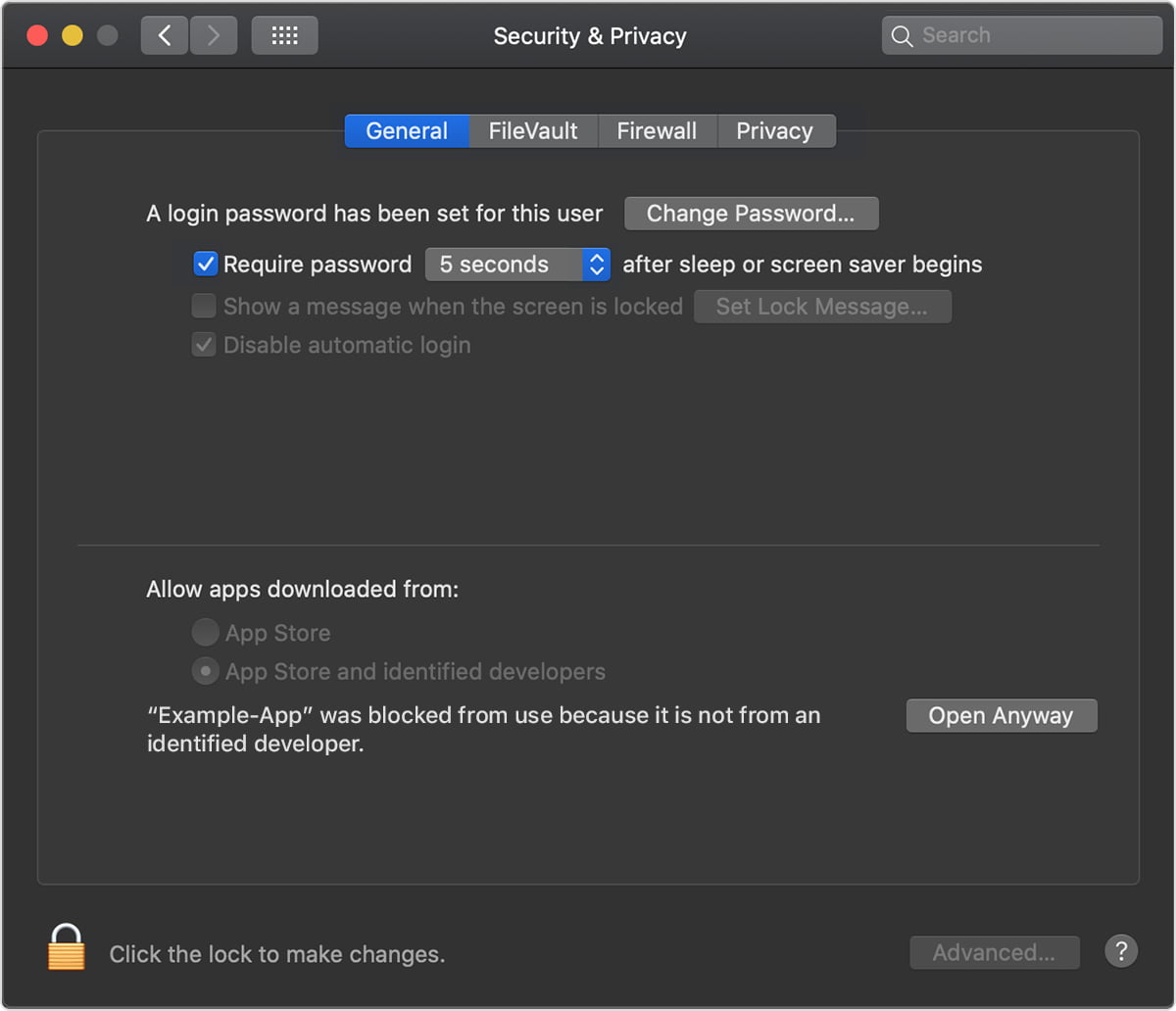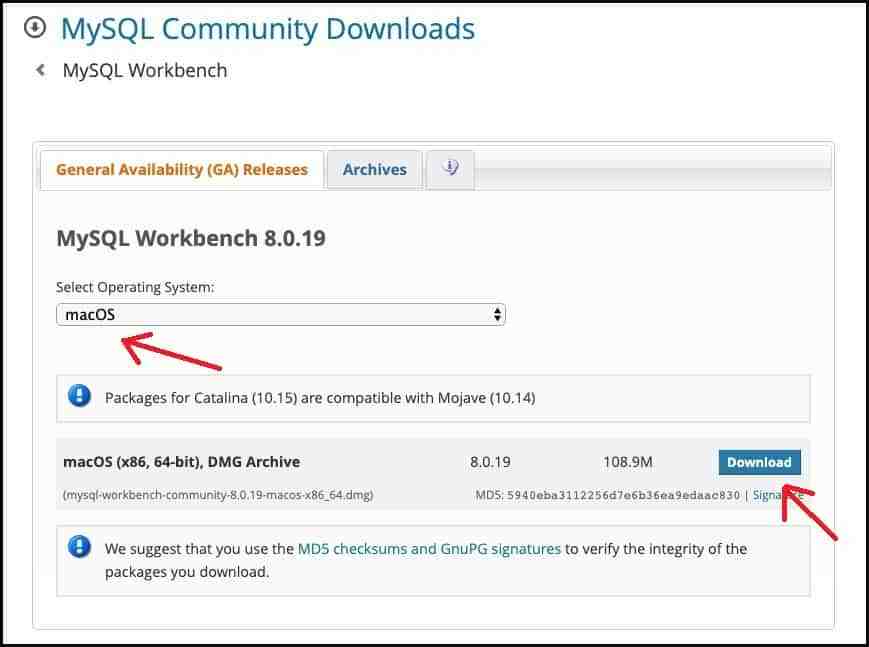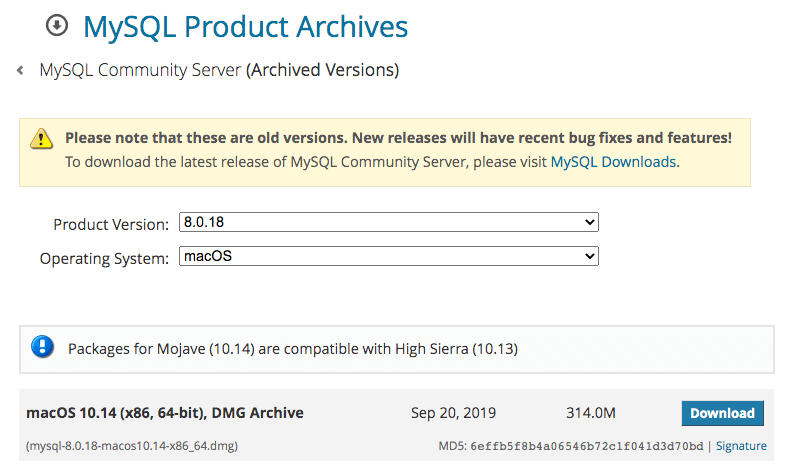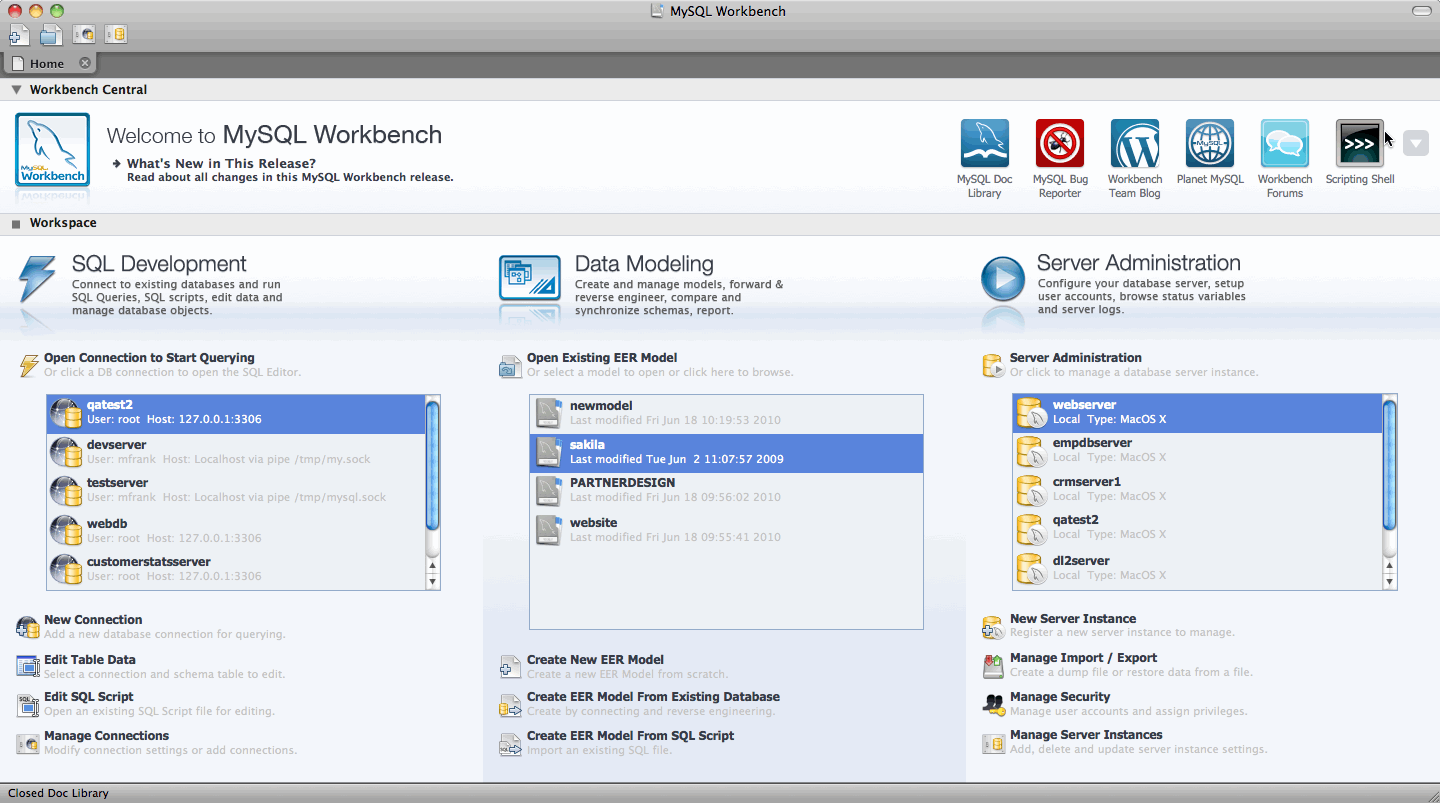macOS Update: While these instructions still work, there are new posts for recent versions of macOS, the latest being Install Apache, PHP, and MySQL on macOS Mojave.
I have installed Apache, PHP, and MySQL on Mac OS X since Leopard. Each time doing so by hand. Each version of Mac OS X having some minor difference. This post serves as much for my own record as to outline how to install Apache, MySQL, and PHP for a local development environment on Mac OS X Mountain Lion Mavericks.
I am aware of the several packages available, notably MAMP. These packages help get you started quickly. But they forego the learning experience and, as most developers report, eventually break. Personally, the choice to do it myself has proven invaluable.
- Mar 06, 2021 To download MySQL in Mac, follow the following steps. Step 1: The first thing you need to do is open your browser and then type ‘mysql.com.’ This will open the MySQL page. Step 2: After opening the MySQL page, click on the ‘Download’ option located on the navbar. After opening the download page, scroll down and select ‘MySQL Community.
- Installing MySQL on Mac OS X El Capitan Posted on February 23, 2016 July 24, 2020 Author Andrew Comeau Posted in #LearnMySQLNow, Database Design, Software A few months ago, I wrote about how to install MySQL on Windows with IIS.
- MySQL 5.1 for Mac OS X — for MacOS 10.4-10.6, Intel only, recommended Version MySQL 5.5 for Mac OS X — for MacOS 10.4-10.6, Intel only. MAMP / XAMPP on Mac OS X. MAMP and XAMPP are complete web development packages. They are designed to give developers an easy way to serve up PHP pages using Apache and MySQL right on their Mac.
- In this post we will learn how to How To Install MySQL on Mac OS X. The same procedure can be used for installing MySQL on Mac OS X.How to add MySQL to $PAT.
Navicat (MySQL GUI) 12.1.3 for Mac is free to download from our application library. The current setup file available for download requires 54.9 MB of hard disk space. The application relates to Developer Tools. This software for Mac OS X is an intellectual property of PremiumSoft CyberTech Ltd.
It is important to remember Mac OS X runs atop UNIX. So all of these technologies install easily on Mac OS X. Furthermore, Apache and PHP are included by default. In the end, you only install MySQL then simply turn everything on.
First, open Terminal and switch to root to avoid permission issues while running these commands.
Enable Apache on Mac OS X
Note: Prior to Mountain Lion this was an option for Web Sharing in System Preferences → Sharing.
Verify It works! by accessing http://localhost
Enable PHP for Apache
OS X Mavericks Update: You will need to rerun the steps in this section after upgrading an existing install to Mac OS X Mavericks.
First, make a backup of the default Apache configuration. This is good practice and serves as a comparison against future versions of Mac OS X.
Now edit the Apache configuration. Feel free to use TextEdit if you are not familiar with vi.
Uncomment the following line (remove #):
Restart Apache:
Install MySQL
- Download the MySQL DMG for Mac OS X
- Install MySQL
- Install Preference Pane
- Open System Preferences → MySQL
- Ensure the MySQL Server is running
- Optionally, you can enable MySQL to start automatically. I do.

The README also suggests creating aliases for mysql and mysqladmin. However there are other commands that are helpful such as mysqldump. Instead, I updated my path to include /usr/local/mysql/bin.
Note: You will need to open a new Terminal window or run the command above for your path to update.
I also run mysql_secure_installation. While this isn't necessary, it's good practice.

Connect PHP and MySQL
You need to ensure PHP and MySQL can communicate with one another. There are several options to do so. I do the following:
Creating VirtualHosts
You could stop here. PHP, MySQL, and Apache are all running. However, all of your sites would have URLs like http://localhost/somesite/ pointing to /Library/WebServer/Documents/somesite. Not ideal for a local development environment.
OS X Mavericks Update: You will need to rerun the steps below to uncomment the *vhost* Include after upgrading an existing install to Mac OS X Mavericks.
To run sites individually you need to enable VirtualHosts. To do so, we'll edit the Apache Configuration again.
Uncomment the following line:
Now Apache will load httpd-vhosts.conf. Let's edit this file.
Here is an example of VirtualHosts I've created.
The first VirtualHost points to /Library/WebServer/Documents. The first VirtualHost is important as it behaves like the default Apache configuration and used when no others match.

The second VirtualHost points to my dev workspace and I can access it directly from http://jason.local. For ease of development, I also configured some custom logs.
Note: I use the extension local. This avoids conflicts with any real extensions and serves as a reminder I'm in my local environment.
Restart Apache:
In order to access http://jason.local, you need to edit your hosts file.
Add the following line to the bottom:
I run the following to clear the local DNS cache:
Now you can access http://jason.local.
Note: You will need to create a new VirtualHost and edit your hosts file each time you make a new local site.
A note about permissions
You may receive 403 Forbidden when you visit your local site. This is likely a permissions issue. Simply put, the Apache user (_www) needs to have access to read, and sometimes write, your web directory.
If you are not familiar with permissions, read more. For now though, the easiest thing to do is ensure your web directory has permissions of 755. You can change permissions with the command:
In my case, all my files were under my local ~/Documents directory. Which by default is only readable by me. So I had to change permissions for my web directory all the way up to ~/Documents to resolve the 403 Forbidden issue.
Note: There are many ways to solve permission issues. I have provided this as the easiest solution, not the best.
Install PHPMyAdmin
Unless you want to administer MySQL from the command line, I recommend installing PHPMyAdmin. I won't go into the details. Read the installation guide for more information. I install utility applications in the default directory. That way I can access them under, in this case, http://localhost/phpmyadmin.
Closing
A local development environment is a mandatory part of the Software Development Process. Given the ease at which you can install Apache, PHP, and MySQL on Mac OS X there really is no excuse.

Find this interesting? Let's continue the conversation on Twitter.
- 2.4.1 General Notes on Installing MySQL on macOS
- 2.4.2 Installing MySQL on macOS Using Native Packages
- 2.4.3 Installing and Using the MySQL Launch Daemon
- 2.4.4 Installing and Using the MySQL Preference Pane
For a list of macOS versions that the MySQL server supports, see https://www.mysql.com/support/supportedplatforms/database.html.
MySQL for macOS is available in a number of different forms:
Mysql 5.1 Download Mac Os X64
Native Package Installer, which uses the native macOS installer (DMG) to walk you through the installation of MySQL. For more information, see Section 2.4.2, “Installing MySQL on macOS Using Native Packages”. You can use the package installer with macOS. The user you use to perform the installation must have administrator privileges.
Compressed TAR archive, which uses a file packaged using the Unix tar and gzip commands. To use this method, you need to open a Terminal window. You do not need administrator privileges using this method; you can install the MySQL server anywhere using this method. For more information on using this method, you can use the generic instructions for using a tarball, Section 2.2, “Installing MySQL on Unix/Linux Using Generic Binaries”.
In addition to the core installation, the Package Installer also includes Section 2.4.3, “Installing and Using the MySQL Launch Daemon” and Section 2.4.4, “Installing and Using the MySQL Preference Pane” to simplify the management of your installation.
For additional information on using MySQL on macOS, see Section 2.4.1, “General Notes on Installing MySQL on macOS”.
Mysql Install Mac Os X
Mysql Client For Mac Os
Mysql Download For Mac Os X El Capitan
Connector/ODBC is a standardized database driver for Windows, Linux, Mac OS X, and Unix platforms. Online Documentation: MySQL Connector/ODBC Installation.